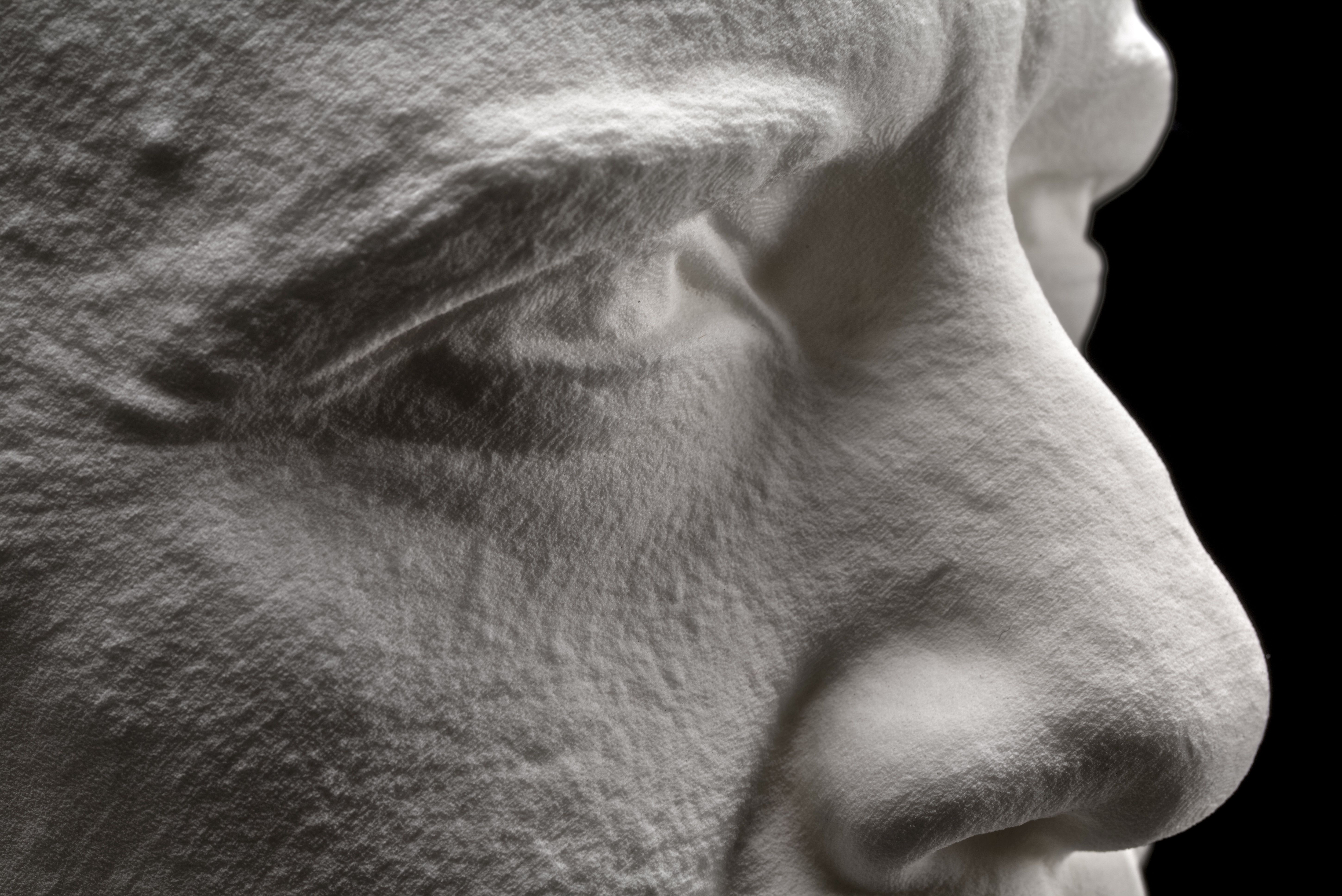3-D Printed Bust of President Obama On View for Presidents Day at the National Portrait Gallery
In 2014, President Barack Obama became the first President to be scanned using 3-D technology. Data from the scan were used to create his portraits, and a 3-D printed bust will be on view for Presidents Day weekend Friday, Feb. 13, through Monday, Feb. 16, at the Smithsonian’s National Portrait Gallery.
The portraits of Obama were created by a Smithsonian-led team of 3-D digital imaging specialists and include a digital and 3-D printed bust and life mask. The data and printed models are a part of the collection of the National Portrait Gallery.
The Smithsonian-led team used two distinct 3-D documentation processes to create their representations. Experts from the University of Southern California’s Institute for Creative Technologies used their “Light Stage” scanner to document the President’s face in high resolution. Next, a Smithsonian team used handheld 3-D scanners and traditional SLR cameras to record peripheral 3-D data to create an accurate bust.
The data captured was post-processed by 3-D graphics experts at the software company Autodesk to create final high-resolution models. The life mask and bust were then printed using 3D Systems’ Selective Laser Sintering printers.
The creation of the 3-D portraits were part of an ongoing effort by the Obama administration to call attention to many innovative uses of technology and to help inspire the next generation to pursue science, technology, education and math (STEM) learning. The administration hosted its first-ever White House Maker Faire last June, and, more recently, hosted the 3-D Printed Ornament Design Challenge in collaboration with the Smithsonian.
The Portrait Gallery’s collection has multiple images of each President and these portraits will support the current and future collection of works the museum has to represent Obama.
The University of Southern California Institute for Creative Technology provided facial scanning services for this project. In-kind support and technical collaboration was generously provided by Autodesk and 3D Systems.
About Smithsonian X 3D
The Smithsonian publicly launched its 3-D scanning and imaging program Smithsonian X 3D in 2013 in order to make museum collections and scientific specimens more widely available for use and study. The Smithsonian X 3D collection features objects from the Smithsonian that highlight different applications of 3-D capture and printing, as well as digital delivery methods for 3-D data in research, education and conservation. Objects include the Wright Flyer, a model of the remnants of supernova Cassiopeia A, a fossil whale and a sixth-century Buddha statue. The public can explore all these objects online through a custom-built, plug-in free browser and download the data for their own use in modeling programs or to print using a 3-D printer.
National Portrait Gallery
The Smithsonian’s National Portrait Gallery tells the history of America through the individuals who have shaped its culture. Through the visual arts, performing arts and new media, the Portrait Gallery portrays poets and presidents, visionaries and villains, actors and activists whose lives tell the American story.
The National Portrait Gallery is part of the Donald W. Reynolds Center for American Art and Portraiture at Eighth and F streets N.W., Washington, D.C. Smithsonian Information: (202) 633-1000. Website: npg.si.edu.
# # #
SI-48-2015
Bethany Bentley
202-633-8293




